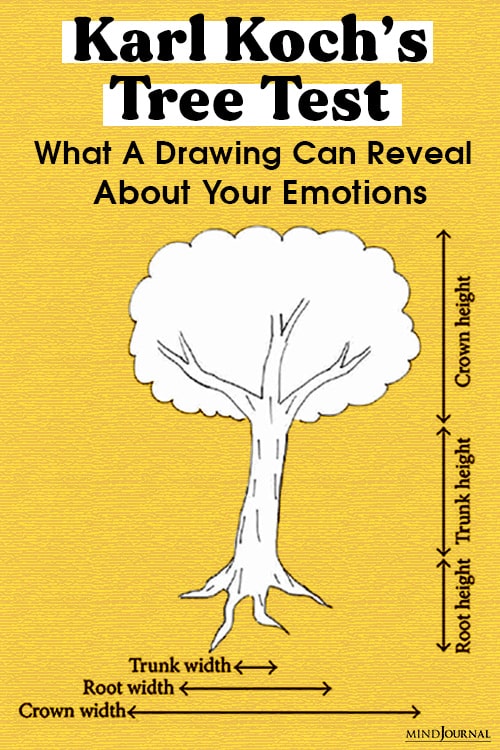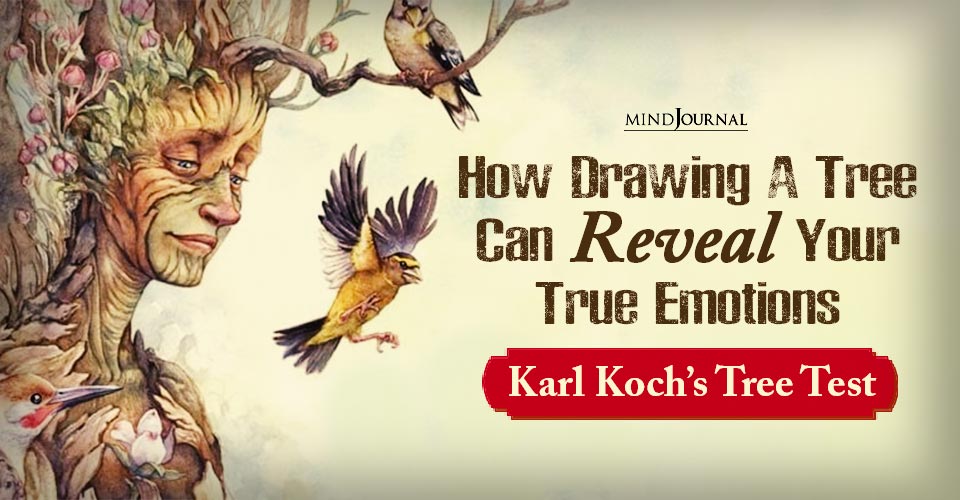Do you want to interpret your or someone else’s personality? Then Karl Koch’s Tree Test might be just what you need. It is a popular psychological test that reveals crucial emotional information.
What is Karl Koch’s tree test?
The Tree Test, also known as Baum test and Koch test, is a popular projective test which is globally used by psychologists to evaluate someone’s personality & their underlying emotional state.
This tree personality test was originally developed by Swiss psychologist and counselor Dr. Charles (Karl) Koch in the 1950s. The test has been designed in a way that it can be used with anyone and with utmost ease. This is one of the reasons why the Koch test is generally utilized with children. However, adults may also use this test as it is an exciting and helpful self-analysis tool that can help you understand your own personality.
One of the greatest benefits of this test is that the Baum test can be taken and applied to different types of people with different mindsets and personalities. It allows us to better understand our emotions. Projective tests, like this one, are generally used as effective clinical and psychological tools that help professionals and experts to collect crucial data on how certain patients understand themselves and perceive their life. Similar to the Draw-a-Person test or the Rorschach test, the tree-drawing test is also used as a complementary test.
Read also: This Tree Test Reveals Your Dominant Personality Traits
How to use Karl Koch’s Tree Test
It is one of the simplest and easiest tests to conduct both by experts and patients. If you want to try Karl Koch’s Tree Test as a self-evaluation tool, then all you need to do is draw a tree along with its crown, branches, leaves, trunk and roots. Once you are done, you can analyze the drawing based on the criteria provided by the test. This tree was particularly chosen by Dr. Koch due to its symbolism. In most regions and cultures, trees are mythologically suggestive and indicative figures which are closely related to nature and humans. When we draw a tree, we are not only drawing what we have seen, we also tap into our inner core which is deeply connected with nature and the symbolism of trees.

Karl Koch’s Tree Test can be used by anyone above the age of 6. All you need are the specific basic motor and cognitive skills required to draw an image. But you don’t need to be an artist or draw well to apply this psychological test. The process starts by offering the person colored pencils, paper & an eraser to draw a tree along with its branches, trunk and roots. However, sometimes, the person may also be asked to illustrate two separate drawings of trees:
- The first one they can draw in anyway they like
- The second drawing should be different from first tree
Analysing two different drawings of trees made by the same person can allow experts to make a better analysis of their personality and emotions. Depending on the skills and requirement of the person, they can be allotted a time duration from 10 to 30 minutes. Sometimes, the individual might also be asked to write an accompanying short essay regarding the illustrated tree.
Read also: Tree Energy: How Trees Help Us Heal
Once complete, a psychologist conducting the tree test will analyze different aspects of the illustration along with the person’s attitude, behavior, body language and comments while making the drawing. Then the drawings are graded between “very immature” to “very mature” and the essay is scored either backwards, normal or advanced.
What can you analyze with Karl Koch’s Tree Test
The Karl Koch Tree Test requires that we create a drawing of a tree & use colors to give birth to a figure using only our imagination on a piece of paper. This process can provide us some insight into our mindset, attitude and personality style. However, it can also help us understand their emotional history and state as well. Moreover, the projective test helps in understanding their sensitivity, vulnerability, lack or presence of internal conflicts, and their mental and emotional stability in life.
According to psychoanalysts, the Baum test can also help to understand our unconscious and the core structure of our psyche. One 2015 study states, the Karl Koch’s Tree Test has proven to successfully diagnose cognitive disabilities and dementia. The study states that “Trees drawn by cognitively impaired patients are different from those drawn by healthy subjects with a progressive differentiation from mild to more relevant degrees of cognitive impairment.”
Read also: Heal Yourself With The Chi Energy of Trees According to Taoist Masters

How to evaluate Karl Koch Tree Test
Interpretation of Koch’s Baum Test is a crucial part of the entire process. When analyzing the Baum test, we need to carefully consider the following elements in the drawing of the tree:
1. The roots and ground

When the drawing has deep roots, it signifies emotional and mental stability, whereas shallow or no roots indicate a sense of exclusion.
- If the roots are shaped disproportionately, then it may denote emotional containment and problems, anger, and even uprooting.
- If the drawing has no strokes for roots or soil, then it may mean a lack of mental and emotional stability.
2. The trunk

So what does drawing a tree say about you? According to Karl Koch’s Tree Test, if your drawing has a big trunk, then it may mean that you are lively and straightforward, while a small trunk means weariness. On the other hand, a wide trunk indicates that you may be impulsive with little self-control and high emotionality. A thin trunk signifies that the patient may be very delicate and sensitive. It can also denote external stress and anxiety. Here are some other interpretations you need to look out for:
- A tree trunk drawn with normal proportions in the tree test reveals internal balance.
- A trunk illustrated with straight lines means the patient is a righteous, thoughtful individual.
- A trunk drawn with wavy lines means that they are socially functional and are mostly likable.
- Trunks drawn with protruding tips, studs, hollows and dilatations depicts fears, suppressed emotions, traumas and inhibitions.
Read also: Trees Have Feelings and Make Friends Too According To Studies
3. The branches

The trunk and the roots are related with our emotional inner world and the branches of the tree are associated with our external, physical environment. It has been observed that children below the age of 9 usually tend to draw small branches and this behavior is normal for them. However, if an adult draws small branches then it can indicate that they are immature and unsociable. Here are some other examples of branches drawn in Karl Koch’s Tree Test:
- Big Branches mean the person is enthusiastic, arrogant and narcissistic with a great imagination.
- No branches show that the patient suffers from a probable cognitive issue and lacks development.
- Rod or lightning shaped tree branches reveal that they are impulsive, rebellious and stubborn with anger issues.
- Spiraling branches mean the person is delicate and has good communication skills.
- Branches with leaves mean they are high-spirited and lively
- Branches drawn with fruits mean the patient has certain goals and objectives they wish to accomplish.
Read also: Discover Your Subconscious Wants Triggers and Desires With This Revealing Psychological Test
4. The canopy

According to Dr. Karl Koch’s Tree Test, the canopy can be observed to indicate the following:
- Canopy with leaves shows the patient is lively.
- If the illustration has large leaves, then they are a friendly person and have good social skills.
- If they have drawn small leaves, then they may be shy and introverted.
Apart from these, various accessories like the environment, hills, sky, grass, animals, birds and houses around the tree are also considered by most psychologists when conducting this projective test. Moreover, the colors used to make the drawing is also considered along with the overall size of the image as well.
An effective self-analysis tool
As it is easy to apply and evaluate, Karl Koch’s Tree Test is widely popular across the world and is used to diagnose both children and adults. So if you want to know more about your personality and emotions, then this can be the perfect and simplest way to get started.
Read also: Fascinating Facts About The Tree Of Life













Leave a Reply